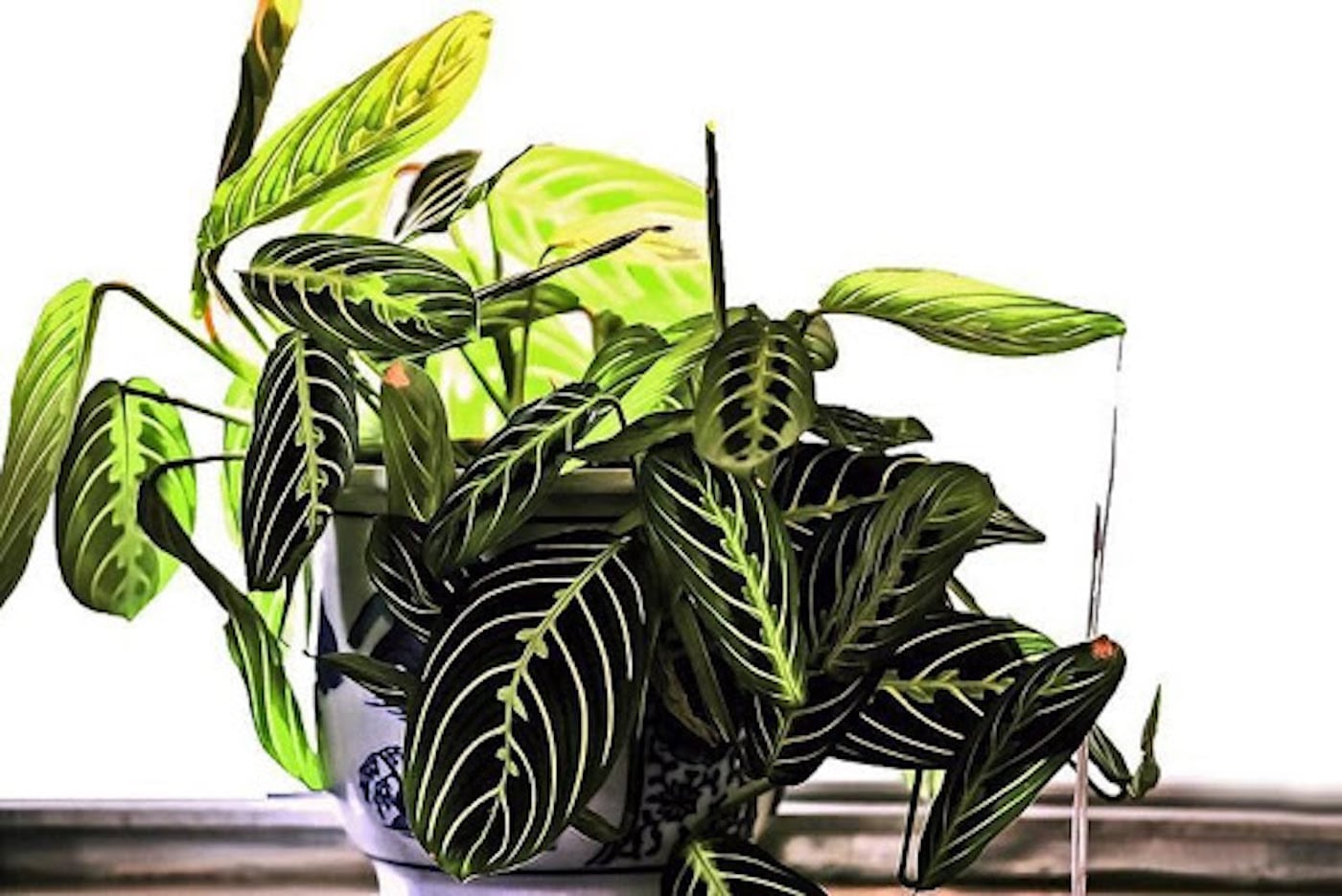Table of Contents
In your canvas-like garden, you use your flowers as your paint and your hands as your brush. Here, you splash on a beautiful painting of vivid colors. However, using the same paint may become a dull routine. Thus, what better day to liven up your gardening than to add a new plant to your painting collection – one that offers unique foliage alongside its unique name: prayer plants. They’re called as such because they are nocturnal at night, folding their leaves to look as if they’re praying. And in the morning, their leaves open back again to bask in the sunlight.
Although the prayer plant has the same nocturnal habit throughout its species, it still has its differences in its foliage. So, if you’re hooked on the wonders, continue below and find out how you can take care of prayer plants such as how to care Rhaphidophora Decursiva Plant and what are the other species to choose from:
How To Take Care of Prayer Plants
From pattern combinations and color mixtures, there are indeed different kinds of prayer plants. However, taking care of each variety is no challenging task – as the types agree on fixed factors that would let them thrive the best.
The prayer plant grows best in low light areas, flourishing in indirect sunlight, good-drained soil, and high humidity. It would help if you always kept these plants moist at all times but never soggy. Additionally, feeding it water and fertilizer every two weeks during the spring until fall will make your prayer plant grow to its fullest.
One tip you could also observe when taking care of your prayer plant is to see if they’re praying every night. If they’ve stopped praying, don’t panic too much as it could mean a problem in the ground’s moistness, sunlight, or even pests. Overall, these plants are just as easy to take care of as much as they’re beautiful.
Choosing Your Prayer Plant
From the different varieties and species of these plants, highlighted here are the best five species you could go for in your garden:
Burle Marxii
The burle marxii was a gift to a landscape architect in Brazil sporting the same name, Roberto Burle Marx. With the topside colored bright green or silver, accompanied by an underside of maroon leaves and an elegant fishbone pattern, the burle marxii amazes its owners as it unravels at night and changes in the day. With this plant on a hanging pot, you get a new display of colors every night and day – living its expectations as an ornamental piece.
Lubbersiana
Not only does the prayer plant species vary in pattern, but size as well. The lubbersiana proves to be a part of that as it can grow to be two up to four feet tall. Not only this, as minuscule flowers could also come with the lubbersiana, deeply in contrast with its deep green leaves.
Additionally, this plant can grow from two to three feet wide and can have different splashes of yellow. Most of the time, these plants thrive in rich, well-drained soil. Wet soil is often bad for most plants as it makes the roots rot faster. iThus, no one can talk about uniqueness and not mention the lubbersiana!
Setosa
The setosa prayer plant is known for its other name, Grey Star. You could tell by its name that its foliage will burst with a silver tone, attracting with its green leaves and red undersides. Not only does this plant boast its unique colors, but it also has its size to be proud of, reaching a height of five feet and a width of three feet. With this in your garden, it’s sure to stand apart from other plants you have.
Leuconeura
This prayer plant is from the genus Maranta and is an ultimate garden must-have. With its deep-green foliage, lined with a pale green midrib, it will feel as though you’re looking at the outlines of a thriving rainforest in your home.
Best for hanging baskets, this plant will become your centerpiece as it can grow from 12 to 15 inches tall. Not only this as it can also produce an elegant burst of purple flowers in the summer.
Thalia
If you’re looking for another color other than deep green, the thalia is your answered prayer! With a mixture of pale red and dark red leaves supported on pale stems, the thalia will be the ultimate showstopper in your home.
Additionally, it could also grow with white and green patterns. Its long and lean leaves will grow up to either eight or 16 inches tall, enticing you with its unique characteristics every time.
Takeaway
Complete with characteristics and colors that may vary from one another, the prayer plant proves to be a rollercoaster of hues and vibrance. Not only are these plants calming to look at, these plants are easy to take care of. The next time you want your garden or house to look immaculate, try using the prayer plant as your go-to foliage.
Featured Image Credit: Flickr


